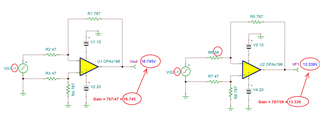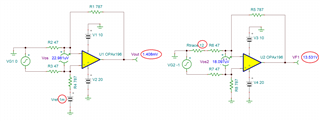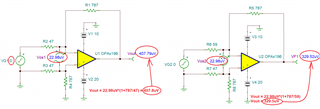Other Parts Discussed in Thread: ALP
Hello, I designed a circuit that takes the output of a hall and amplified that output using the op amp given in the description. However I am finding that the output voltage is lower than what I expected. I will provide more detail below.
The hall sensor I am using has a differential output that goes from 0-0.6V, so I used this op amp in a differential configuration to obtain an output that goes from 0-10V. Thus, requiring a gain of ~16.67 V/V. The resistor values I chose were 47 ohms and 866 ohms. They were all tested and very close to their advertised value. I am wondering if I am expecting some loading effect because my resistor values are too small? If so, what resistor values do you recommend?




